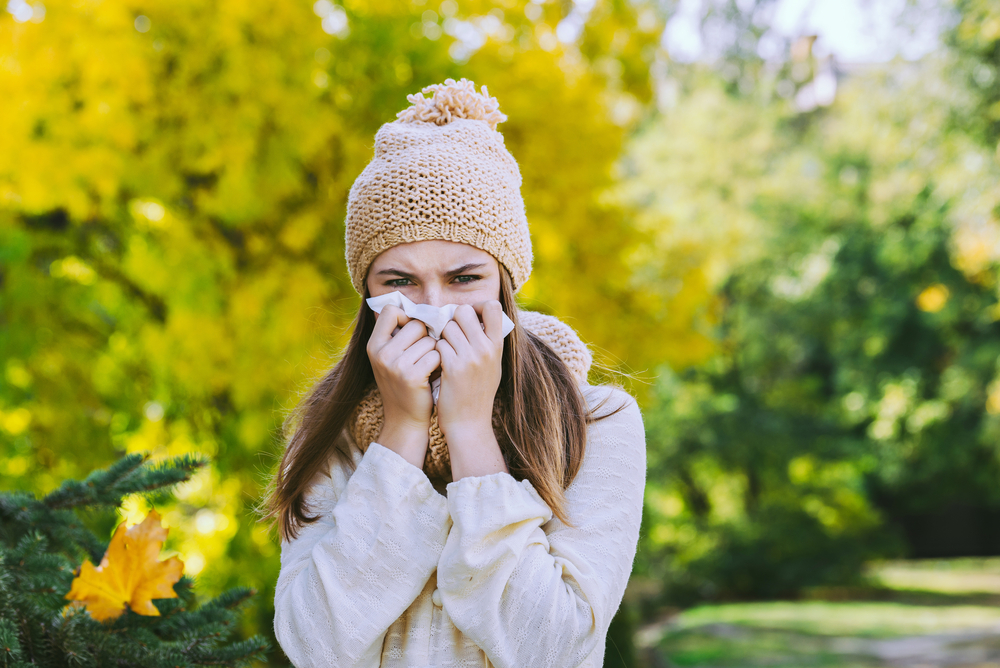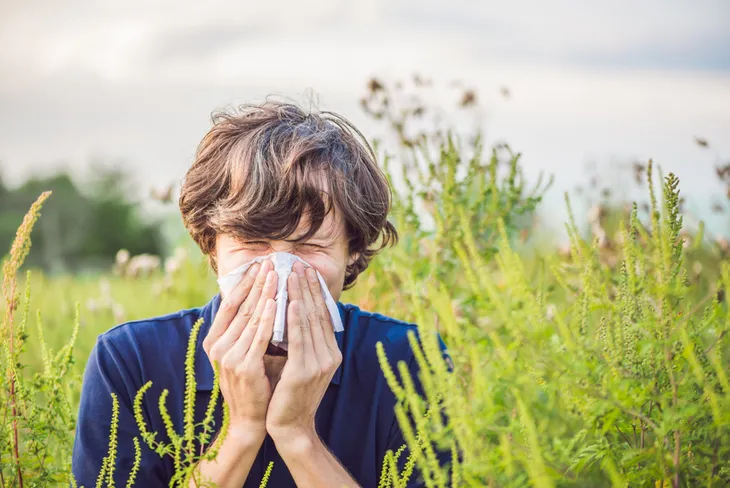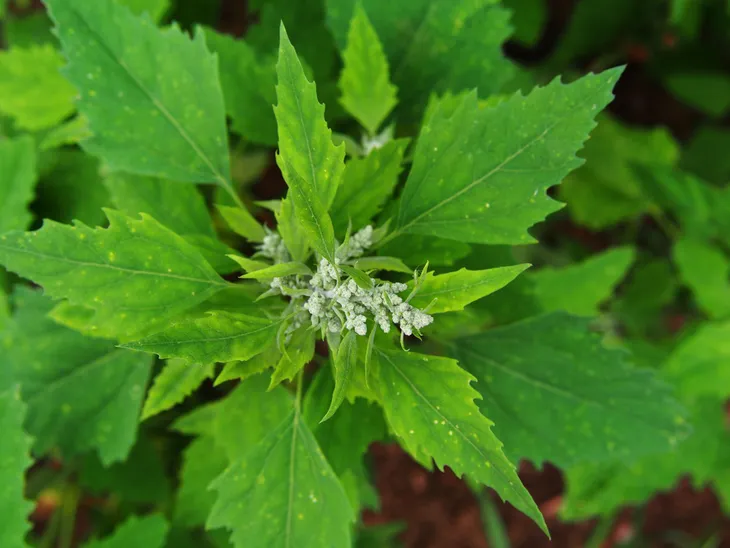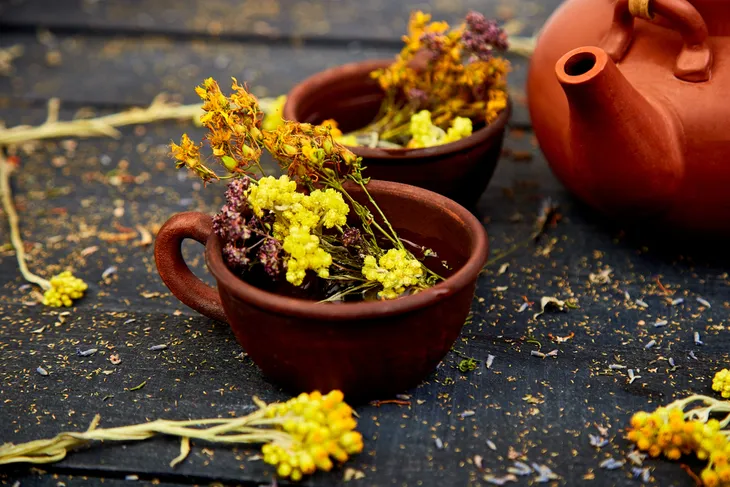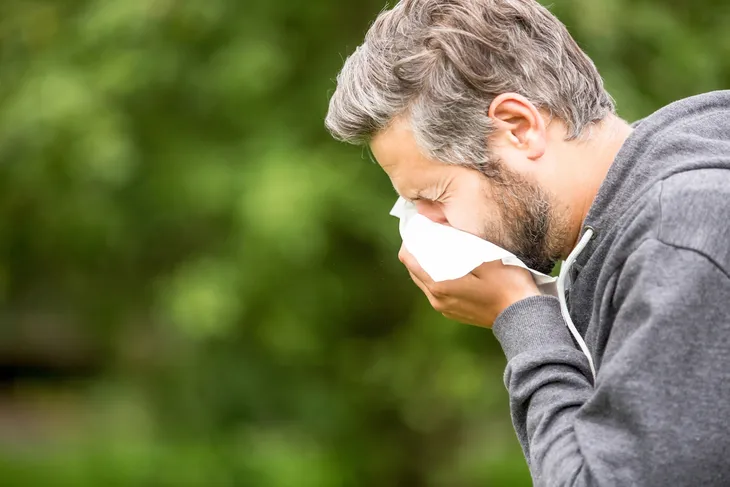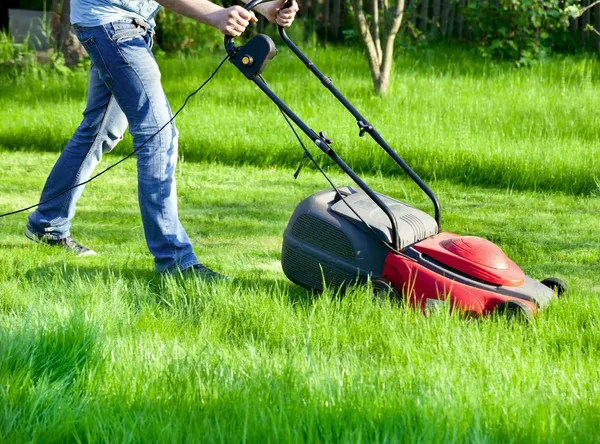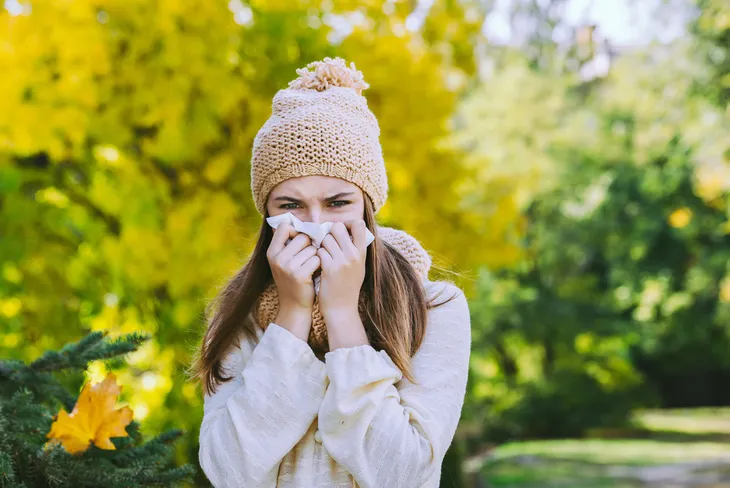We often associate seasonal allergies with one season: spring. And there’s some reason for that: it’s during the early to middle part of the year when many plants that trigger allergies begin to grow and even bloom, releasing particles into the air that cause huge problems for tens of millions of North Americans.
But the fall season presents its own serious challenges. Most problematic may be the fact that many weeds pollinate in the late summer and fall, sending particles into the air and into our homes and offices. And that’s just one challenge we face during this season, with others becoming more visible as we head back inside to escape the progressively cooler weather. Now, let’s take a look at some fall allergy concerns and how you can help avoid or manage them.
Ragweed
Ragweed and its pollen can present problems throughout the year, but they’re particularly irritating during the fall months, when ragweed releases pollen at an alarming rate. Consider that, in a single fall season, just one ragweed plant is capable of releasing a billion grains of pollen. Consider also that the pollen released by a ragweed plant can travel for hundreds of miles by catching a strong gust of wind. This causes immense problems for North Americans with allergies and especially those living in areas where ragweed is most visible: the deep South, North, and Midwest.
To help limit the impact of ragweed on your system, try learning where the plants are most prevalent in your community and avoid that area. If you live in a place where ragweed is especially pronounced, and if you have an intense allergy to it, consider wearing a mask when you go outside. Other tips: keep your windows closed, especially on windy days; and limit how much you go outside. And look forward to the first frost of the year: it usually causes the ragweed plant to stop pollinating.
Goldenrod
If you live in a rural area, there’s a good chance you’ve become familiar with goldenrod, a plant that blooms right around the time that ragweed does during the fall months. Unlike ragweed, however, goldenrod is pollinated only by insects, rather than the wind, so it’s less likely to cause a huge stir among a large group of people. Nevertheless, it’s often a bigger problem than it gets credit for.
To limit the impact of goldenrod, follow many of the strategies that help with ragweed and its pollen problem. Keep your windows and doors closed during the fall months and avoid spending too much time outside. If allergies are a major problem for you, consider wearing a mask when you go outside and talk to your doctor about effective medications, like antihistamines and nasal sprays.
Curly Dock
Curly dock is a temperate climate weed that’s most prevalent and widely dispersed in the northern hemisphere. In North America, it may be most visible in California, where there are roughly 24 different species present of the rumex genus umbrella, under which curly dock falls. These plants are most likely to be found in low, moist areas, as they thrive in places where the soil is regularly damp.
Curly dock typically pollinates in the spring and summer, but it can remain an issue into the fall, especially in places where it’s most prevalent, like California. Most experts believe curly dock and other plants in the rumex genus produce more pollen — and more problems for those with allergies — than it’s credited for. To limit its impact, avoid spending lots of time outside, especially if you live in damp or humid valley areas and California.
Lamb’s Quarters
Lamb’s quarters is another pollen-producing plant that can cause major problems for allergy sufferers in North America. Although its pollen production is relatively modest compared to ragweed and curly dock, it does produce a considerable amount of pollen during the late summer and into the fall months.
Lamb’s quarters, like curly dock, thrives in damp environments, especially wetland or aquatic habitats. For these reasons, it’s best to avoid areas where water gathers if you struggle with allergies on a regular basis. And, as with many of the other allergens on this list, watch how much you go outside and keep your windows closed during the months when it’s most problematic.
Pigweed
The leafy green pigweed plant that features small, coarse green flowers, is a common weed in North America. It’s often found in quiet fields or abandoned barns in rural areas but has been known to appear in residential neighborhoods as well. It typically sheds its pollen in the late summer and early fall months, causing big problems for individuals with seasonal allergies. As with ragweed, the result of encountering pigweed pollen is usually watery eyes, sneezing, and an itch around the face area.
Pigweed is tough to avoid because it’s so durable and can live in such a wide variety of areas. As with many of the other pollen-producing plants listed here, its impact can be limited by just avoiding the places where it grows and trying to keep inside during the months when it sheds. Antihistamines can help, but talk to your doctor about the issue first.
Sagebrush
Sagebrush is a pollen-producing plant commonly found in the Midwest and Northwest regions of North America. Like ragweed, sagebrush can produce a huge amount of pollen, particularly during the late summer and fall months. It’s also very durable, making it tough to eliminate or avoid.
Because sagebrush pollen can be nearly impossible to avoid, it’s best to limit your exposure to it during the fall months. Avoid hanging your clothes outside if it’s known to be an issue in your area. Also, keep the windows in your home and car closed unless absolutely necessary.
Outdoor Mold
When we think of mold, we usually imagine the stuff that grows in damp bathrooms, clammy basements, or on aging food in the refrigerator. But mold can take many forms and often thrives outside, particularly during the summer and fall months. Unfortunately, this can present major problems for individuals with allergies, as outdoor molds often cause sneezing, watery eyes, and running nose. And the problem is unlikely to go away until the first frost, when the growth of mold tends to halt.
The specific problem with outdoor mold is the spores it produces. These spores become airborne in a way similar to the pollen produced by weeds like ragweed and pigweed. It can be very difficult to avoid these spores, though it helps to know that they’re usually a bigger problem during the daytime hours, when warmth causes them to rise in the atmosphere. So, if you’re a big fan of the outdoors, it may be best to limit your adventures outside until the evening hours, when the cooling air causes spores to retreat to the ground.
Indoor Mold and Mildew
Elsewhere on this list we’ve discussed the danger posed by the spores released by outdoor mold, but there are similar threats inside the home. Mold and mildew can both be found inside the average house or apartment, often in cool, damp areas like bathrooms, basements, and inside the refrigerator. And unlike outdoor mold, which has less impact on allergy sufferers during the winter months, indoor mold and mildew often remains a problem throughout the entire year.
Because these threats are already inside the home, keeping windows closed and avoiding the outdoors won’t help. Instead, do your best to limit the accumulation of mold by restricting the humidity in your home. You can help do this by using a fan in your bathroom and a dehumidifier in your basement or other cool, clammy parts of the home. As for the refrigerator, be sure to clean it regularly and consider using an open box of baking soda to draw away moisture.
Dust Mites
Like pollen released by plants like ragweed, it can be really difficult to limit the impact of dust mites on individuals with seasonal allergies. In fact, it can be even tougher because, unlike pollen, dust often emerges inside the home, meaning closing windows won’t do a lot of good. The problem for allergy sufferers is that the tiny microscopic mites in dust — which feed on flakes of our skin — can cause irritation when breathed in.
Removing dust mites from the home is all but impossible, especially if you live in an older home or a dry area. The best plan of action is to regularly dust your home using a safe cleaning agent. You can also cover your bed using dust-proof covers, thereby allowing you to sleep easier. It’s also a good idea to install air vents that can cycle air out, limiting the potential impact of dust mites.
Pet Dander
Those of us who own pets — like cats and dogs — know that pet dander is a year-round threat for individuals with allergies. The good news is that dogs and some cats can be let outside during the warmer months, allowing them to lose some of their dander and limiting the impact of dander on those inside. Unfortunately, as fall arrives and the weather turns cold, pets tend to spend more time indoors, increasing the problems associated with pet dander allergies.
You can limit these problems and their impact by regularly brushing your animals and wiping them down or giving them baths. You can also seek out animals that are less likely to shed their dander, such as the labradoodle or poodle. You may also want to re-think owning a cat, since they tend to shed far more dander than dogs. If that’s not an option, regularly dust and vacuum the home and wash your face and hands after touching your pets.
Grass
North Americans in suburban areas have something of a love-hate relationship with their grass. On the one hand, we love having a carefully manicured and deep-green lawn on which we can hold summer parties and barbeques with friends and family. On the other hand, it’s a chore to maintain these lawns and for people with allergies, grass can present big problems, like sneezing, runny nose, and watery eyes.
Grass tends to have a more visible impact on our allergies during the summer months, when everyone is outside, but in most parts of North America the threat lingers into the fall prior to the arrival of frost and snow. As with limiting the impact of pollen, allergy sufferers should keep their windows and doors closed and regularly clean their homes to remove any grass that makes it inside.
Hay
There’s a reason they call it “hay fever”: although the word, today, is fairly synonymous with seasonal allergies as a whole, hay and the particles from it that spread into the air can lead to watery eyes, sneezing, runny nose, itching, and a rash. Obviously, this problem is a little more pronounced in rural areas where one is more likely to be exposed to hay.
You can reduce your exposure to hay by doing your best to avoid it altogether and, if that’s not possible, using protecting gloves, clothing, and masks. Antihistamines can also help limit the impact of symptoms like itchiness, stuffed-up nose, and rash.
